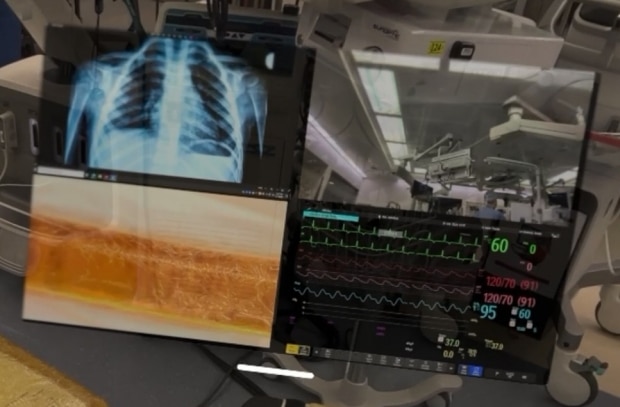A team of physicians and biomedical engineers from Stanford Medicine is among the first to integrate a new augmented reality tool into surgical practice. The technology that is used is Apple Vision Pro, a headset that allows the wearer to navigate their surroundings using real-time visual data.
As reported on the Stanford website, a cardiologist used the technology, with the patient’s consent, to perform an ablation procedure. Stanford Health Care has designed operating rooms to be suitable for new innovations, so patients are provided with exceptional care. Augmented reality is emerging as an innovative way of entertainment, education and virtual multitasking: it is possible, in fact, to use headsets to watch a movie, chat with friends or browse the web. But doctors at Stanford Medicine decided to use augmented reality, powered by spatial computing technology, to create an edge in the operating room.

During the ablation performed by Alexander Perino, an electrophysiologist at Stanford Health Care, several data points had to be monitored in real time, including a detailed representation of the patient’s heart and critical information such as ultrasound images and vital signs. However, the large number of monitors in the operating room can be cumbersome and inefficient for surgeons, who often depend on staff to manage and interpret data. By using the headset for spatial computation, Perino was able to manipulate the virtual monitors autonomously, allowing for a clearer view and facilitating interaction with the data during the procedure. The headset tracks Perino’s eye movements, allowing him to focus on relevant data and zoom in or rearrange screens with simple finger or hand gestures. This new technology has allowed Perino to improve ergonomics and efficiency during ablation, allowing for greater focus on the patient and the procedure.
During the procedure, the surgical team also used conventional monitors to visualize what Alexander Perino saw through the augmented reality headset. According to Perino, the current goal is not to replace conventional methods, but to add a new tool that can improve the efficiency and quality of care. How this technology will be used in operating rooms in the future has yet to be determined, but Perino and others are interested in exploring further possibilities, including educational and training purposes, as well as more advanced uses during surgical procedures. Perino hopes that this initial demonstration will help integrate spatial computing technology as a useful tool for surgeons, improving data manipulation and leading to tangible benefits for patients. The integration of augmented reality into surgical practice at Stanford Medicine represents a significant step towards innovation and improvement in healthcare. Although the full potential of this technology has yet to be fully understood and exploited, early successes demonstrate its potential to optimize the surgical experience and improve out-of-patient outcomes. With further research and development, augmented reality could become a standard tool in operating rooms, leading to tangible benefits for doctors and patients.
Written by Sara Pia Votta